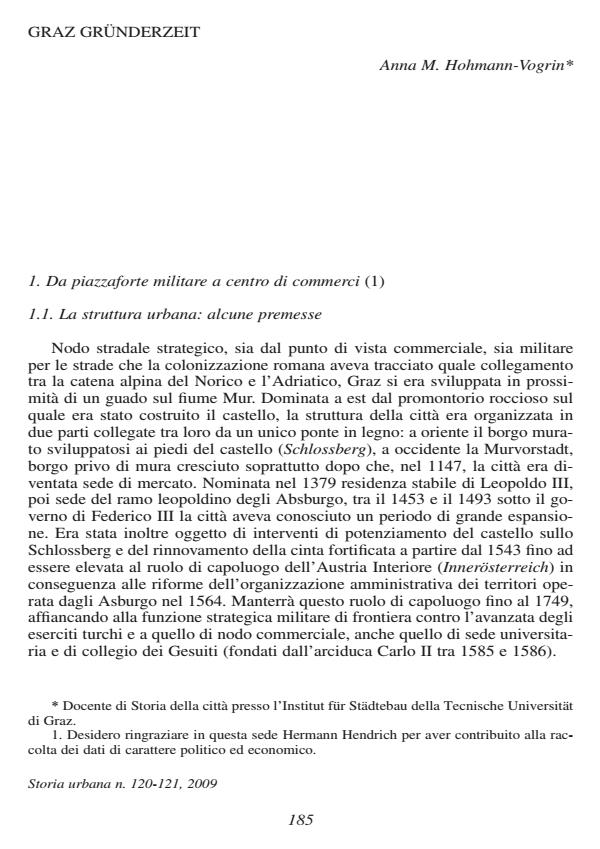Graz Grunderzeit
Titolo Rivista STORIA URBANA
Autori/Curatori Anna M. Hohmann-Vogrin
Anno di pubblicazione 2009 Fascicolo 2008/120
Lingua Italiano Numero pagine 22 P. 185-206 Dimensione file 8057 KB
DOI 10.3280/SU2008-120009
Il DOI è il codice a barre della proprietà intellettuale: per saperne di più
clicca qui
Qui sotto puoi vedere in anteprima la prima pagina di questo articolo.
Se questo articolo ti interessa, lo puoi acquistare (e scaricare in formato pdf) seguendo le facili indicazioni per acquistare il download credit. Acquista Download Credits per scaricare questo Articolo in formato PDF

FrancoAngeli è membro della Publishers International Linking Association, Inc (PILA)associazione indipendente e non profit per facilitare (attraverso i servizi tecnologici implementati da CrossRef.org) l’accesso degli studiosi ai contenuti digitali nelle pubblicazioni professionali e scientifiche
Graz Grunderzeit - Graz in the Gründerzeit, the Era of Industrial Development Graz was an important military stronghold and commercial center in the mining basin of Styria. Archduke Johann of Hapsburg promoted the building of its first railway line in 1844, which was linked to the Vienna-Trieste line in 1857. Members of the rich industrial bourgeoisie were able to make investments that helped expand the city outside the walls, beginning with the 1830s. Graz’s urban development plans were guided by criteria modeled after those of the Ring in Vienna. In the latter 1800s, Graz’s projects for dealing with its increasing population reinforced this tendency, exemplified in the headquarters buildings of local political and economic powers, which give its outer rings its characteristic stately elegance.
Anna M. Hohmann-Vogrin, Graz Grunderzeit in "STORIA URBANA " 120/2008, pp 185-206, DOI: 10.3280/SU2008-120009